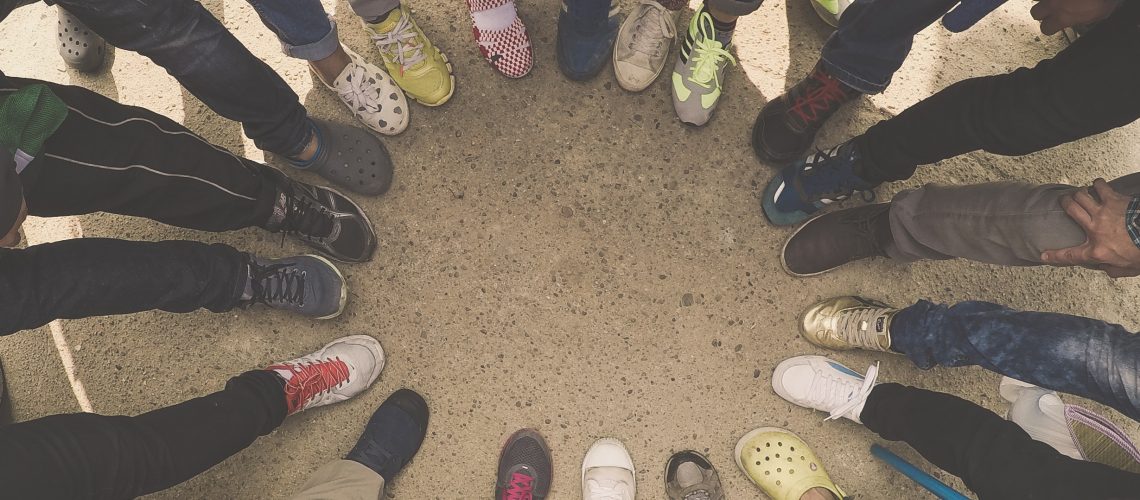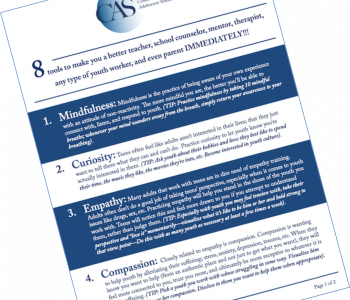

catharine hannay, ma
Catharine Hannay is the founder of MindfulTeachers.org and the author of Being You: A Girl’s Guide to Mindfulness, a workbook for teen girls on mindfulness, compassion, and self-acceptance.
Recommended Resources on ADDRESSING Diversity
One of my most sobering moments as an English as a Foreign Language teacher came during a discussion about Martin Luther King’s ‘crusade for justice.’ Some of the students didn’t know what ‘crusade’ meant, so I asked for a volunteer who could define the word.
A young man from Saudi Arabia raised his hand. “I don’t know how to explain in English,” he said. “But I know it means something bad.” All of the Muslim students nodded their heads in agreement.
It made me realize how much I’d been influenced by my own upbringing in a Christian family of western European descent, and that a lesson on civil rights wasn’t just a Black and White issue.
According to Pamela Hays’ ADDRESSING Framework, cultural influences are a combination of Age, Developmental and acquired Disabilities, Religion, Ethnicity, Socioeconomic Status, Sexual orientation, Indigenous heritage, National origin, and Gender.
As David Treleaven explains in his book on Trauma-Sensitive Mindfulness:
Systems of oppression divide groups into two categories: those that are privileged and everyone else… By ensuring we’re attuned to the social identities someone carries—and considering how those identities might interact with ours—we can adjust our interventions to try to effectively meet the needs of the person we’re working with.
Treleaven gives the example of Yvonne, a middle class Black woman who was having panic attacks because a neighbor muttered racial slurs every time she passed him in the hallway. Yvonne’s therapist tried to be supportive by leading her in a guided meditation.
“Know that you are safe… Safe in this office, and safe in this world. Mindfully rest yo—” And that’s as far the therapist got before Yvonne stood up and reached for her coat.
I can tell you’re well-intentioned. But this world isn’t safe for you and me in the same way. We both live in a very White town, and when I walk out this door, I have a very different experience from you. I’d need you to understand that if we were going to work together.
There were two issues here, and neither was necessarily that Yvonne was Black and the therapist was White. There are plenty of therapists who work effectively with clients whose backgrounds differ from their own. The first problem was that the therapist didn’t understand that a guided breathing exercise could trigger a trauma reaction, especially after Yvonne’s emotionally intense experience of talking about her panic attacks. The second problem was that it was clear the therapist thought Yvonne was overreacting to her neighbor’s comments.
It reminded me of a conversation with one of my male friends about the #metoo movement and my own experiences of unwanted attention from men.
“I don’t understand why women make such a big deal about that,” he said. “I’ve had unwanted attention from women who were attracted to me. What’s the difference?”
As I told my friend, here’s the difference: He may have felt annoyed, but he never felt frightened.
The world isn’t safe for you and me in the same way.
Thinking in these terms helps me understand the perspective of other vulnerable groups and realize the ways in which I’m privileged as a white, cisgender, heterosexual woman from a relatively affluent background.
Father Gregory Boyle says that “It is a self-help maxim of the privileged to say, ‘Don’t sweat the small stuff.’” The poor live in what Fr. Boyle describes as “the ‘forced choice’ economy, having to choose between, say, feeding their kids or paying their rent. Doing without heat and electricity or putting gas in the car.”
There’s also a disproportionate level of exposure to violence to among marginalized groups. “In the high-poverty urban areas of Los Angeles County, one in three youth suffers from post-traumatic stress disorder. That’s twice the rate of soldiers returning from war.” (Barking to the Choir: The Power of Radical Kinship)
If we look at any aspect of ADDRESSING, there’s a group that’s more privileged than another. Not always in an economic sense, but in that feeling of safety vs. fear: the very old and very young are more vulnerable than those of us somewhere in the middle. LGBTQ youth are more likely to be bullied. People with disabilities face all kinds of discrimination and abuse.
There’s a poignant moment in The Absolutely True Diary of a Part-Time Indian when the narrator reflects on the difference between the kids he knows at his all-white high school compared to the kids he knows back home on the reservation:
I’m fourteen years old and I’ve been to 42 funerals… A few of my white classmates have been to a grandparent’s funeral. And a few have lost an uncle or an aunt. And one guy’s brother died of leukemia when he was in third grade. But there is nobody who has been to more than five funerals. All my white friends can count their deaths on one hand. I can count my fingers, toes, arms, legs, eyes, ears, nose… and still not get close to my deaths.
In a recent post, I cautioned against jumping to conclusions about someone based on his or her ethnicity or country of origin. It’s equally important not to be too naïve in assuming that we all have the same experience of the world. Therapists and teachers can unintentionally do harm if we fail to acknowledge the impact of belonging to a group that faces marginalization, discrimination, and violence.
I recommend the following resources to develop greater understanding and effectively support students and clients from backgrounds different from your own:
- Austin Channing has a discussion guide on race and ethnicity with thought-provoking questions that could be used for class discussion or as part of a professional development session.
- The National Child Traumatic Stress Network has a guide on Addressing Race and Trauma in the Classroom
- Emily Ladau’s blog, Words I Wheel By shares her perspective as an activist for disability rights and social justice, including “What I Want Future Teachers to Know About Disability”
- Teaching Tolerance magazine has articles and lesson plans related to race & ethnicity, religion, ability, class, immigration, and gender & sexual identity, including:
- At MindfulTeachers.org:
- Indigenous advocate Maggie Dunne explains how to be more accurate and sensitive when teaching about Native American history and life
- Irene Kraegel of TheMindfulChristian.com addresses the cultural divide between Evangelical Christians and secular mindfulness teachers
- A group of d/Deaf and sign-proficient counselors and teachers explain about Deaf culture and how to effectively communicate with and without an interpreter
- And I have a few previous guest posts here at the Center for Adolescent Studies blog, drawing on my 20 years of experience teaching international students, immigrants, and refugees:
While I hope these resources are useful, it’s important to remember that our students and clients are the experts on their own lives. Rather than assuming we know what they need, it could be far more helpful simply to listen and validate their experience of the world.
Join the FREE Resilience Community for Helping Professionals to learn more about trauma-informed care, resilience, mindfulness, building relationships, and more! Our community features self-paced courses, a monthly live Zoom call, a weekly live meditation, and an online platform to connect with other providers/professionals in your field.
Related Posts
4 Tips for Culturally-Sensitive Teaching
Add a Culturally-Aware Lens to Your Trauma-Informed Toolkit

